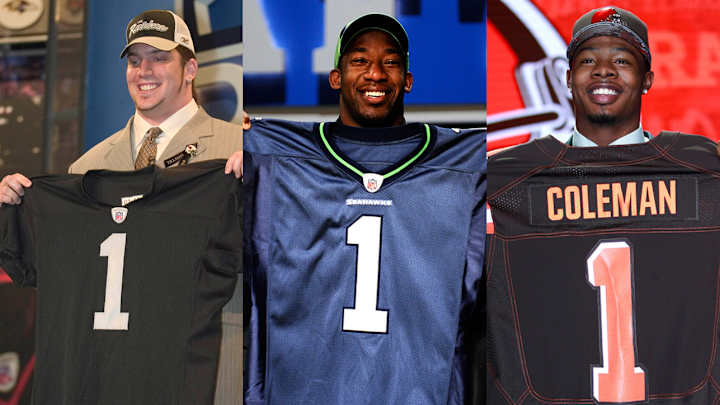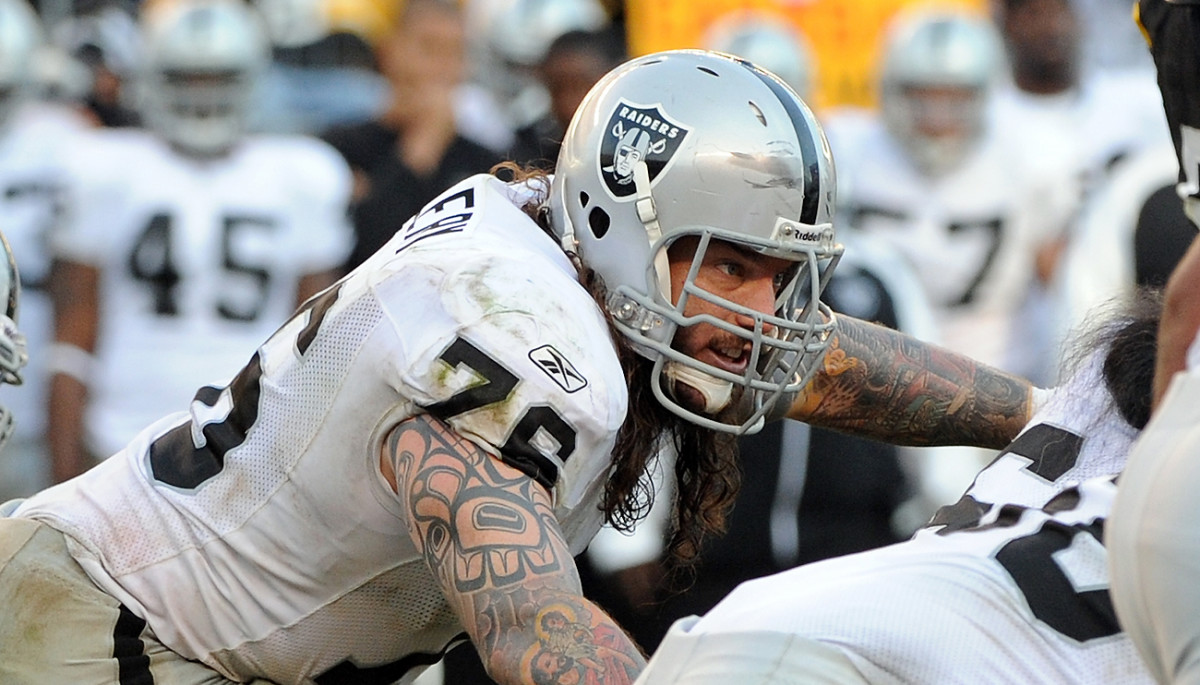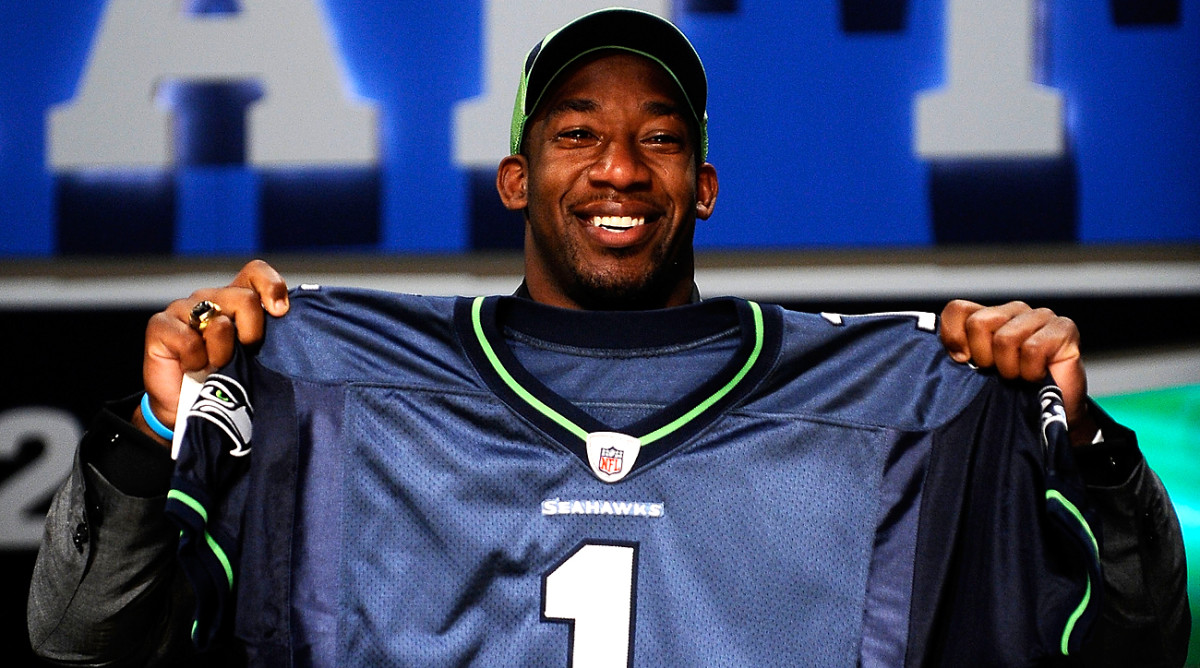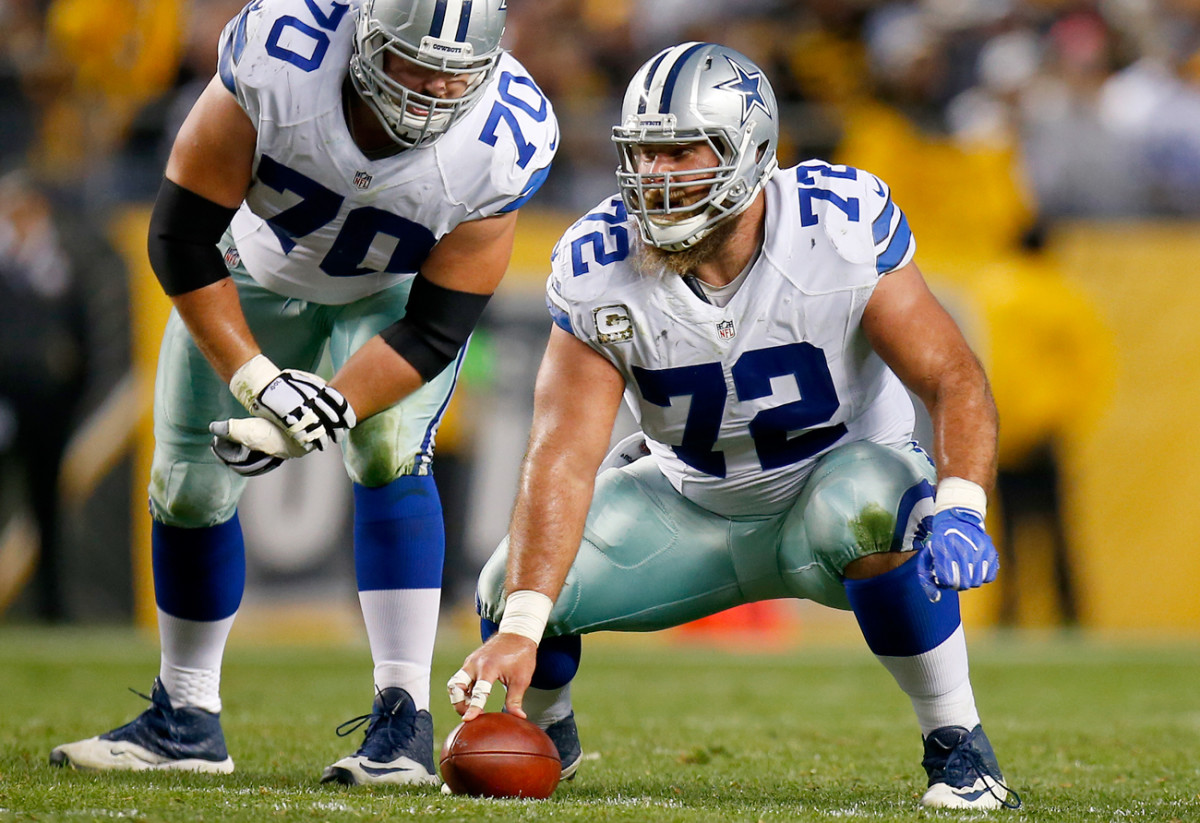The Nine Myths You’ll Hear on Draft Night

The NFL draft is fun because it propagates genuine optimism for all 32 fan bases. Every team feels better about its roster coming out of the draft than it does going in. But with this optimism, naturally, comes a host of clichés and misleading aphorisms. Not to be a buzzkill, but those can compromise the integrity and validity of actual football analysis. And so with that, here are nine draft misnomers to watch out for this Thursday, Friday and Saturday.
9. The 10-Year Left Tackle
“You can plug this guy in at left tackle and not worry about that spot for the next 10 years,” dozens of draft analysts say about almost any left tackle taken in the first round. But why left tackle? And why 10 years? About 90 percent of the people making decisions on draft night will be making decisions for another team—or not at all—10 years from now. And why are guards, centers, tight ends, receivers, defensive linemen, linebackers or safeties not considered guys you can plug in for 10 years? It’s utterly arbitrary.
A theory: In 1996 the Ravens drafted Jonathan Ogden fourth overall. The next year the Rams drafted Orlando Pace first overall and the Seahawks took Walter Jones sixth. All three had Hall of Fame careers, and as they neared a decade with their respective teams, the “10-year left tackle” became a thing. I first remember hearing about it—a lot—in 2004 with Robert Gallery of Iowa. Of course, the gritty Hawkeye would go on to illustrate that the “10-year left tackle” draft declaration is just empty noise. Drafted second overall by the Raiders, Gallery struggled for three years at left tackle before moving to guard, where he was decent for the next four years. Then, after one uneventful year in Seattle, he was out of the league.

Have other left tackles since Ogden-Pace-Jones come along and had stellar 10-plus year careers with their original team? Sure—but there’s been an average of one per year. And included on that list are a few “good but not great” left tackles—Jeff Backus, D’Brickashaw Ferguson—whom we could debate as to whether they justified their first-round status. In between these players, you’ve had plenty of Greg Robinson-Matt Kalil-Jason Smith types. Left tackles can bust just like any other position. Which segues into our next item ...
8. The “Safe Pick”
Usually when someone calls a guy as a “safe pick,” it means that guy plays a position that most people don’t really understand. Offensive linemen are often deemed safe picks. So are safeties, strong-side linebackers and run-stopping defensive linemen. It’s a randomized label that means absolutely nothing. I’ve never heard the term “safe pick” used as much as it was in 2009 for Wake Forest linebacker Aaron Curry. The Seahawks took Curry fourth overall that year. He played three seasons in Seattle and then 13 games over two years in Oakland before washing out of the league.

7. “I Really Like the Player”
This is a phrase reserved for intriguing but flawed prospects or dark-horse mid-rounders. No one ever had to plainly state that they “really like” Andrew Luck, Von Miller or Saquon Barkley. It’s an acceptable phrase, but it can skirt past the critical reality that fans and media—and even some NFL teams—often overlook, which is that at each position, there are certain physical traits that are mandatory for superstardom. Most of these traits cannot be taught. A snapshot of them, which we analyzed in greater depth a few weeks ago, are listed here:
QB: precision accuracy and pocket poise
RB: lateral agility
WR: the ability to beat press coverage (a hard one to project, as it is half God-given, half learnable).
Slot WR: change-of-direction
TE: ball-tracking (receiving) or contact balance (blocking)
OL: knee bend
DE: mid-body flexibility (edge rusher)
DT: initial quickness
LB: play recognition
CB: man-to-man prowess (heavy athletic demand)
S: open-field tackling (athletic demand and reliable instincts)
A good analyst will say “I really like the player” and cite a list of that player’s traits (if the analyst is smart and hardworking). If that list doesn’t include the trait listed above, 99 times out of 100 that player will never be more than “good but not great.”
6. The Belichick Trade-Down Praise
It seems as if every year, the Patriots trade down, and everyone declares Bill Belichick a genius. And yes, he is—but more as a coach than a GM. The Patriots, like any team, miss on plenty of picks. And, presumably, they understand that the draft, given its astounding number of pedigreed busts every year, is inherently a crapshoot. In that case, trading down and accumulating more picks is smart. But it’s not as if the Patriots are the only team that does this. And it’s not as if it’s their hard-and-fast rule. In 2002 they traded up for tight end Daniel Graham, and in 2012 they traded up for Dont’a Hightower. The Patriots treat every draft on a case-by-case basis—again, like most teams. Their success has been a combination of Tom Brady, shrewd scheming, acquiring key veterans and, yes, drafting and developing players. But isolate the “drafting” part and you could argue that a half-dozen franchises have a higher batting average than New England over the last 10 years.
5. “Best Guy on Our Board”
Every team says this is the player they take. Every team is lying (either to itself or, more likely, to us). As one head coach recently put it to me, teams take “the best player on their board relative to need.” If a QB is the highest-rated player remaining on, say, the Browns’ or Chiefs’ board in this draft, do you think they’ll take that QB?
For some reason we’ve come to believe that taking the best player on your board is honorable. But being super strong and deep at one spot won’t matter if you’re glaringly weak at another. Think of a roster as a recipe. Some ingredients are more important than others, and you can have extra of certain ingredients. But the ingredients are only as good as the way they relate to each other. A missing ingredient can ruin everything. Teams know this. They just say they take the best player available because they don’t want to offend or belittle the incumbents at their new best-player-available’s position. That’s understandable.
4. The Developmental Player
They’re scrutinized optimistically in the draft, but rarely do truly raw developmental projects work out in the NFL. Rarely does a first-round pick actually sit and learn from the bench as a rookie. This is especially true at QB, which is the position where people talk about “sitting and developing” talent the most. The only two QBs since 2005 who were drafted in the first round and sat essentially their entire rookie years before going on to be franchise guys are Aaron Rodgers and Patrick Mahomes (and they’re the two most purely gifted throwers to come into the league over that span, if not ever). If you don’t think a player can contribute meaningfully right away, he’s probably not a true first-round prospect.
3. The Reach
If a team needs a corner and takes one, at, say, 15, when most projections had him at 25 or so ... who cares? Ultimately, the idea of the draft is to turn weaknesses into strengths. If you’re on the clock at 15 and want a certain player, your options are: 1) take him at 15, or 2) trade back and hope to get him later while picking up additional draft capital. But to trade back significant spots a team must have several players in mind, because if you jump back more than just a few spots believing your desired player will still be there, you’re assuming you know what every other team’s draft board looks like. Remember, after you trade back, someone else can always trade up ahead of you.
It’s a classic “bird in the hand” situation. If you love a player—like how the Cowboys loved “overdrafted” Wisconsin center Travis Frederick a few years ago—take him.

2. Position Misvalues
Left tackles are no longer more valuable than right tackles. (Besides the changing nature of offense, look who NFL right tackles must pass-block these days: Von Miller, Khalil Mack, Demarcus Lawrence, J.J. Watt, T.J. Watt, Brandon Graham, Joey Bosa, Ryan Kerrigan, Dee Ford, Cameron Jordan, Danielle Hunter and Cam Wake, to name a few.)
And with running back rotations so prominent, a No. 3 receiver or No. 2 tight end can trump a starting running back, depending on your system.
Misvalued positions are even more prevalent on defense. People look at whether a team runs a “4-3” or a “3-4,” not realizing that the two front structures are not nearly as different as people think, and forgetting that it’s usually irrelevant anyway because defenses play nickel about 70 percent of the time. And so not only is a No. 3 corner drastically more important than a No. 3 linebacker, but with the influx of dime packages (which often come in critical third down situations), a No. 3 safety is more valuable than a No. 3 linebacker—and, in some systems, maybe even more valuable than a No. 2 linebacker.
Under this umbrella, people also get hung up on whether a guy is a starter. But it’s not about how many snaps a guy plays as much as it is the role he fills. Pass-rushing specialists, third-down backs, hybrid back-seven pass defenders can, in certain situations, be more valuable than a player who happens to be listed atop the base-package depth chart.
1. “They Missed on This Pick”
This notion doesn’t come to light until a few years after the draft. If a player busts, the assumption is the team made a bad pick. And yes, sometimes that’s true. But almost always, there’s more to it than that. Because just about every player taken in the first round was projected to be drafted somewhere in the top 60. If the Giants had not taken Ereck Flowers at 9 in 2015, another team would have taken him somewhere in the first round. If the Browns had not taken wideout Corey Coleman at 15 the next year, someone would have snatched him shortly after that. Or they would have taken busts like Josh Doctson or Laquon Treadwell, who were drafted 22nd or 23rd that same year.

Usually it’s not the pick that was bad, it was what happened after the pick. A player might have an inept position coach. He might have the wrong players around him. The scheme can change, and he becomes a poor fit—which happens plenty in a league in which 28 of the 32 offensive coordinators have changed in the last three years. A player can become a different person after he gets rich. Remember, these guys are in their early 20s and fresh out of college. They’re right at that age where they’re becoming smart people but don’t actually know anything yet. I shudder to think what I would have been like if someone made me a millionaire my first year out of college. You change a lot in the first half of your 20s. Plus, there are injuries and a longer regular season; pro football puts a player’s body through a test its never taken before.
Enjoy the draft this week, take the reactions with a grain of salt.
Question or comment? Email us at talkback@themmqb.com.
